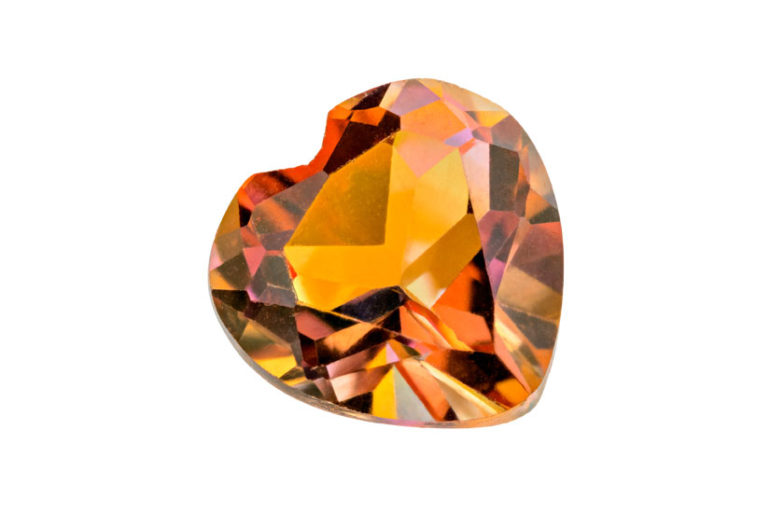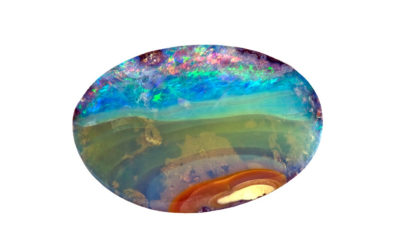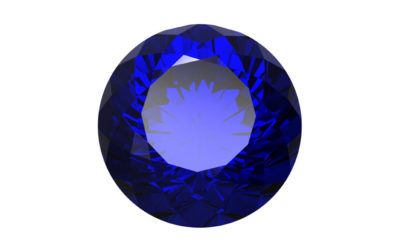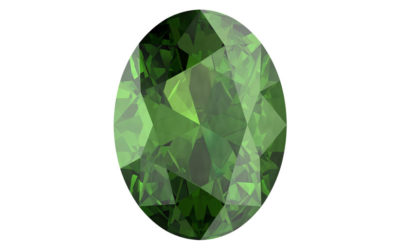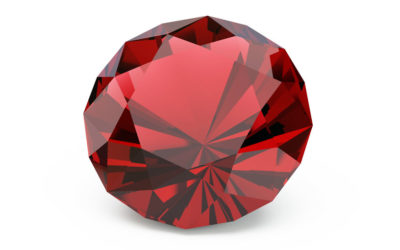The month of November is another month in which those born under the autumn sky have a choice between two gems—the topaz and the citrine. (November Birthstone)
The topaz has a bigger variety of colors to choose from so those who feel like they have to choose may want to go with this gem due to mere variety. The Citrine, while more limited, comes with an alluring shade of either orange or yellow. Either way, both of the gems tend to have an aura of serenity around them and are rumored to bring good fortune to their wearers.
What also makes the topaz and citrine gems charming are how affordable they are in comparison to other gems. They still have a good quality about them as well, even if they’re not as rare as other gems. These two gems can make choosing one or the other difficult, but then again, why make yourself choose if you don’t have to? Chances are, once you’ve familiarized yourself with both gems, you’ll find it merely impossible to choose!
The history of topaz–part one
The November gem comes in a slew of colors including the rare red and the more common brown, violet, pink, orange, yellow, light blue and colorless. Many of the topaz you see on the market are blue. The blue variety comes after the colorless version is treated via heating and irradiation. The colorless version has been known for its mystical quality thanks to the rainbow effect created by its top coating.
It is believed by some gem enthusiasts that the word “topaz” links back to the Sanskrit word “tapas,” the word for “fire.” Others debate that it came from the Greek word “topazos.” Either way, the gem has caught the eye of many people through different generations and garnered its reputation for giving its wearers positive benefits. In ancient Greece, the gem was believed to give the wearer strength. Early European civilizations used the stone to counter magic spells and to decrease one’s anger. (What does topazos)
The history of topaz–part two
In India, people believed that the November birthstone (when adorned on your person near the heart) gave the person a prolonged life, increased their intelligence, and made them beautiful.
The orange imperial topaz has a royal history to it. Many believe that the name comes from the Russian royal family’s influence. The tale goes that they considered it the best color and version of the gem. Perhaps the reason they believed this was because this variety of the gem was mined from their own Ural Mountains, and was used exclusively for their nation. (Ural Mountains)
The origin story of imperial topaz differs in Brazil. According to Brazilian lore, the gem became popular back in 1881 after Emperor Pedro II went to Ouro Preto, a place not too far from where Brazil mined and produced the red-shaded birthstone. The birthstone was given to him as a gift. (Pedro II)
The history of citrine
Citrine, with its translucent shade of yellow to orange-brown, is actually quartz. Arguably one of the most commonly-used gemstone-types in jewelry creation, it has a long history that spans to ancient times. (Complete Information Guide)
Historically, it has crossed paths with topaz even before they became birthstone brethren. There were times in which it was mistaken for a topaz. This is perhaps why it’s believed that this gem also helps to ease one’s anger and bring about a serene nature to the wearer.
As some people may pick up from the name alone, the gem is believed to get its name from the French “citron,” which means “lemon.” Both words are similar to “citrus,” which we all know is used to describe fruits like lemons, oranges, tangerines, and other fruits of the same qualities and color. It makes sense given how the gem comes in a variety of yellow and orange hues. Its color is what made it very popular back in the Victorian era. It was used to make elaborate Scottish jewelry.
Where can you find topaz?
The birthstone can be found mainly in Minas Gerais, Brazil. For the past two centuries, the location has been crucial to the mining and trade of the gem. It is the reportedly highest quality variety of the gem comes from. It is also the location of a wide variety of shades of the gem, where red, pink, violet, yellow and orange gems have been unearthed. It’s helped make the close-by town of Ouro Preto popular among gemologists. (Historic Town)
The gem is also found in Northwestern Pakistan. Popular for the pink variety of the gem, Ghundao Hill has been a mining location since 1972. The ones with a splash of violet to them are the most popular; they’re called “cyclamen pink” topaz in the gem trade business. It should be noted however that the pink variety of the gem is rare, even at this location. Other locations they’re found are in Eastern, Central and Southern Asia, more specifically, Sri Lanka, Afghanistan, Pakistan, and Japan. It’s also been found in parts of Europe and North, Central and Southern America.
Where can you find citrine?
The well-known places to find the gemstone are Uruguay, Mexico, Madagascar, Spain, and Bolivia. Interestingly enough, amethyst tends to be heat-treated into a citrine color, and they’re found within Brazil.
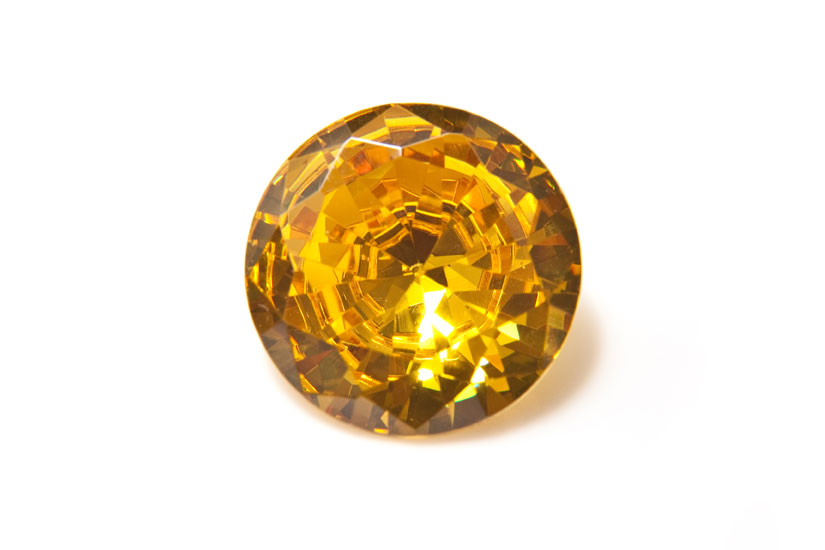
Citrine, the other birthstone for November
Arguably the most fascinating stories of the gem’s location come from deep within Anahi Mine. The location is one of the world’s largest freshwater wetlands and is where you’ll get unheated, natural versions of the gem. It was discovered by a Spanish conquistador within the 1600s. The story goes that the land was given to him as dowry after he married Anahi, a princess born to the Paraguay tribe Ayoreos. (Ayoreo – Survival)
Lost to history, the land was full of beautiful wildflowers, graceful jaguars, howler monkeys, and a rainbow of butterflies and birds. The conquistador, they say, was taken aback by the beauty of the land. It was rediscovered sometime in the 1960s.
The mine is also known for making what gemologist have coined the “ametrine,” a combination of the amethyst and the citrine. The swirl of color is eye-catching with its yellow-orange and brown-yellow shades. Because of its common sightings, the citrine is one of the most affordable gems ever.
How to clean and care for your topaz
Coming in at an eight on the Mohs scale of hardness, the gem is quite “soft.” Therefore, it’s a good idea to take good care of it so it doesn’t crack or chip. It’s best to avoid typical gem cleaning methods like steam cleaning and ultrasonic cleaners. The good old mild soap and water is more than enough. Avoid putting the gem in different temperature extremes. Taking it from a very cold and immediately to a very hot climate can cause it to crack.
Be sure to be wary of how long you keep it exposed to sunlight or heat. In general, the gem is fine when exposed to light, but prolonged exposure to the aforementioned heat and sunlight can cause it to lose its color, especially in some yellow-to-brown versions of the gem.
Be mindful of chemical exposure too, as some of them can negatively affect your gem. One exception to some of these rules is if you have a mystic topaz. They’re coated, so their exposure to light isn’t as sensitive. Just be sure not to use abrasive cleaner or buffing wheels on it. They’ll dissolve the coating. (What is Mystic Topaz)
How to clean and care for your citrine
Coming in at a seven on the Mohs scale of hardness, the gemstone has average durability so that you can wear it frequently, as long as you care for it. Much like topaz, the gem should be cleaned with warm water and mild soap. You can clean it through steam cleaning or an ultrasonic machine, but you shouldn’t do so frequently. You risk cracking the stone due to the intense heat used in the process.
Topaz lore–part one
The origin of the gem is believed to come from the ancient name of St. John’s Island in the Red Sea. It is now believed that the once notoriously difficult to locate place was where the then-yellow stone (chrysolite) was found. Historic figure Pliny called it Topazos, the legendary island in the Red Sea. Later on, the subject was covered by Herbert Nicols, an author who was responsible for one of the first systematic treatises on gemstones and minerals, in 1962. (Pliny the Elder)
The November birthstone is mentioned in many versions of the modern Christian Bible. Scholars believe that it came from the Septuagint translation known as “topazios.” The details become fuzzy as the translation is used more for describing a yellow stone, not necessarily a topaz. Some believe that the translation is noting peridot or chrysoberyl.
Topaz lore–part two
The gemstone was believed to cure the wearer of lunacy according to English superstition. The gem was believed to heal the person of mental and physical maladies and keep them from dying during the Middle Ages.
Ancient Greek culture believed that it increased your strength and made you invisible. The Romans, on the other hand, believed it help to bring sharper vision. Ancient Egyptians wore them around their neck to prevent injuries.
Earlier in history, prior to having the more sophisticated technology of today, nearly every gem with a golden hue was called a topaz. As mentioned earlier, citrines were once considered a topaz. The same fate befell the smoky quartz. To our ancestor’s defense, the gems are hard to differentiate with the naked eye.
Citrine lore–part one
The November gemstone was popular in medieval Scottish and Celtic culture. It was worn in an amulet and used to protect the wearer against ailments like bad skin, sickness, and bad thoughts. Some wore it to protect themselves against poisonous bites from the venomous adder of Scotland. The stories of how it saved people are how the gem became so popular.
It also has a lasting tradition of being a business darling. Some have called it the “Merchant’s Stone,” because it’s rumored to attract money and prosperity to those who sell it. The lore goes that it’ll bring you luck if you put a piece of it in your cash box. It will bring you more money. For those who don’t have a business, the lore says to put a piece of it in your wallet.
The idea of success also extends to making smart business decisions. It also helps you not only gain wealth but helps you to keep it as well. It supposedly keeps you from becoming greedy or materialistically attached to your wealth. It also is said to help make its owner more generous. They’ll share their prosperity with other people more willingly. In other words, it helps create a healthy outlook about wealth.
Citrine lore–part two
Success isn’t just for business. The November gemstone brings you success in legal issues, education, or familial affairs. If the lore is to be believed, you don’t necessarily need to wear it as a piece of jewelry. You can just put a piece of it in your pocket, and you’ll have positive energy! It will help you to make the wisest decision in important matters.
On a personal note, the birthstone supposedly helps to increase your self-esteem, sense of confidence, and self-respect. It does so by dispersing negative energy that collects within you and around you. It also helps to increase your self-discipline and courage, which will help to stave off procrastination. (It is pretty ideal if you’re a November baby in college and struggling to get started on a tall stack of homework assignments.)
Those who believe in stones having energy say that the gemstone has a positive and engaging energy about it. It’s believed to be “self-cleaning,” meaning that it doesn’t hold onto the negative energy that it collects. It’s ideal for breaking bad habits and addictive personality traits. Some have even claimed that the gem has helped them with personal traumas and mental illness.
As the leaves begin falling at the beginning of November, it’s heartwarming to think that both the citrine and topaz gemstones are known for bringing a calm state of mind to its wearers. They make you want to put on a warm fuzzy sweater, grab a cup of pumpkin spice-flavored chai tea, slip one of the gems in your back pocket, and take a deep breath. It may be hard to choose between the two so you may as well slip each of them in your pocket!
References
DEFINITIONS. “What does topazos mean?” Definitions.net, www.definitions.net/definition/topazos (accessed January 13, 2019)
The Editors of Encyclopaedia Britannica. “Pedro II | emperor of Brazil | Britannica.com” Britannica.com www.britannica.com/biography/Pedro-II (accessed January 13, 2019)
GEM ROCK. “What is Mystic Topaz And How To Care For It | Gem Rock Auctions” GemRockAuctions.com www.gemrockauctions.com/learn/did-you-know/what-is-mystic-topaz (accessed January 13, 2019)
GIA. “November Birthstone” GIA.edu, www.britannica.com/place/Ural-Mountains (accessed January 13, 2019)
Minerals. “Complete Information Guide to Rocks, Minerals, & Gemstones” Minerals.net www.minerals.net/mineral/quartz.aspx (accessed January 13, 2019)
Stannard, Jerry. “Pliny the Elder | Biography, Natural History, & Facts | Britannica.com” Britannica.com www.britannica.com/biography/Pliny-the-Elder (accessed January 13, 2019)
Survival. “Ayoreo – Survival International” SurvivalInternational.org www.survivalinternational.org/tribes/ayoreo (accessed January 13, 2019)
UNESCO. “Historic Town of Ouro Preto – UNESCO World Heritage Centre” Unesco.org whc.unesco.org/en/list/124 (accessed January 13, 2019)
Yastrebov, Yevgeny V., Poulsen, Thomas M. “Ural Mountains | mountains, Eurasia | Britannica.com” Britannica.com www.britannica.com/place/Ural-Mountains (accessed January 13, 2019)

